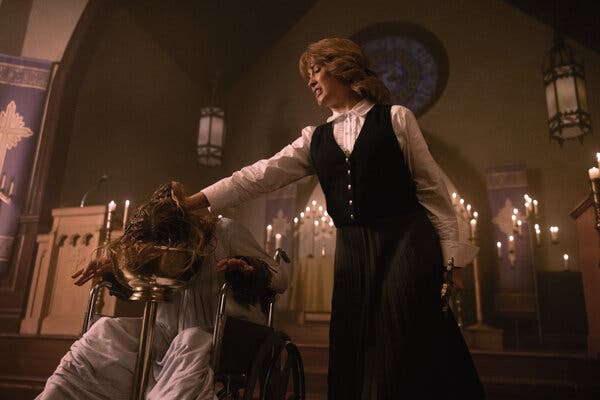The Satanic Panic That Never Goes Away
Five years ago, the television writer Matthew Scott Kane sold “Hysteria!,” a scripted drama that takes place in the late 1980s. The series was inspired in part by the tumult of misinformation he found online and in the media of the late 2010s. Shows like these take time to make, and Kane worried the idea would pass its best-by date.
“I kept thinking, man, I don’t know if this is going to feel relevant,” he said in a recent interview.
“Hysteria!” which premiered on Peacock on Oct. 18, is set in a small Michigan town in the grip of the so-called satanic panic of the 1980s and early 1990s, an episode of mass hysteria which imagined that a cross-country network of satanic cults was engaged in ritual abuse, animal sacrifice and infanticide. In the pilot, a high school football star is discovered dead. Suspicion turns to several of his classmates, members of a heavy metal band that exploits satanic imagery.
The aesthetics of “Hysteria!” — the wallpaper, the jeans, the popular music — are distinctly ’80s. But the impulse to displace social anxieties onto perceived groups of outsiders is as American as apple pie. (Are those apples poisoned? Do they have razor blades inside?) And in a culture of heightened political rhetoric and pervasive misinformation, as apparent now as it was five years ago, the distance between the satanic panic and current conspiracy theories — QAnon, say, or the supposed grooming of children by queer people — is a short one, barely the length of a suburban lawn.
Recent works of fiction — “Hysteria!”; the novel “Rainbow Black”; the fourth season of “Stranger Things”; the film “Late Night With the Devil” — all treat the satanic panic as a discrete historical event. But they also suggest how the panic’s concerns resonate in the present. As it turns out, Americans are still panicking. We may always be panicking.



